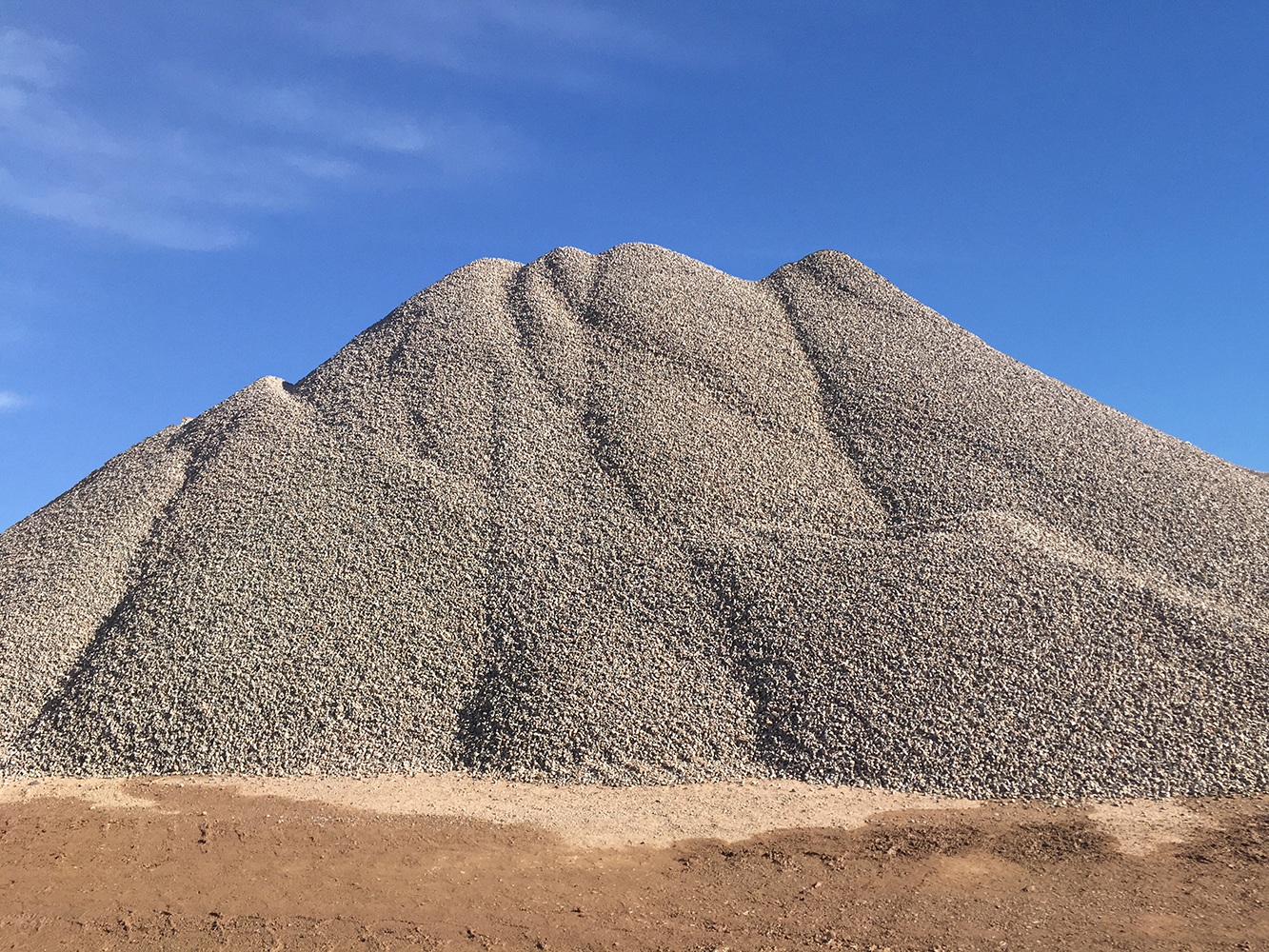by Aaron Wilder, Curator of Collections and Exhibitions at the Roswell Museum
© Roswell Daily Record
“How to Denegate a Mountain #3 (Gravel from a Sand and Gravel Quarrying Process from the Western Slope of the Manzano Mountains, Veguita, New Mexico),” by Paula Castillo, 2018. Inkjet print of digital photograph. Courtesy of Paula Castillo.
I want to start by thanking my colleague Cloe Medrano, registrar at the Roswell Museum, for writing the museum’s last monthly “From the Vault” column on artist Peter Moran. This month I want to focus on an upcoming group exhibition, “Regenerative Actions,” and particularly the work of participating artist Paula Castillo.
A regenerative action is a gesture, movement or effort to achieve a reversal of human-led environmental destruction through adaptive strategies of regrowth and revival, engendering a renewed existence of all species on this planet. For those familiar with the term “sustainability” but not “regeneration,” the distinction lies in how each is pursued. Those focused on sustainability are essentially treating the symptoms of climate change, whereas those focused on regenerative actions seek to reverse human-caused environmental devastation while also pursuing alignment between the needs of humans with the needs of all other species.
The exhibition “Regenerative Actions” is the first-of-its-kind collaboration between the Roswell Museum and the Santa Fe Art Institute (SFAI). For the past several years, SFAI has selected an annual theme of critical importance and has invited residents whose work intersects with that theme. The 2023 theme was “Changing Climate” prompted by the question, “Do we believe we can curb carbon impacts or even reverse the current carbon trajectory and subsequent climate devastation?”
Paula Castillo, based in Belén, explores how notions of home apply to New Mexico and the surrounding region and uses allegorical narratives to expose the historical and ecological origins of contemporary issues and to identify solutions. Castillo attended Yale University for two years but dropped out to work in an electronics factory, an experience that sowed the seeds of her current contemporary art practice. She later went on to receive her Master in Fine Arts in 3D Studio Art from the University of New Mexico.
Her project "Reverse the Curse" uses aspects of local Indigenous curandera traditions to reposition the Rio Grande River as a living, breathing being that needs to be cared for and restored after withstanding extensive abuse for more than a century. Castillo’s project is a participatory performance art piece depicted through installation, photography, and video. The demise of the river is imagined as a “mal de ojo” or “evil eye” curse, fundamentally caused by envy. The traditional curandera approach to curing this curse is a practice referred to as “spitting at the victim.” Castillo has invited participants living along the river from Taos to Ciudad Juárez to converge at their local bridge and spit into the Rio Grande below in an effort to reverse the river’s curse. In a statement about the project on the artist’s website, Castillo said, “Reverse the Curse" uses the audacity of local magic to provide an allegory for a participatory and embodied tithing to the Rio Grande, an entitlement to a body of water who is not allowed to have any share of her own water.”
Castillo’s project “Corn is People” investigates the crop’s current status as a commodity connected to current and historical systems of capitalism and colonialism. In a statement about the project on the artist’s website, Castillo says, “The Puebloans and other Uto-Aztecan nations that blanketed the North American Southwest depended on corn culturally and agriculturally and used corn to develop more complex societies. The cultivation of corn was a critical factor in health and success and relationships with surrounding tribes. However, corn was much more to these nations than just a foodstuff; it was equally significant within their spiritual beliefs and literature. Corn has played a vital role in colonization, industrialization and overproduction. The Midwestern American Corn Belt is the epitome of this nexus. Much like it advanced into a tool of domination and control in Mayan culture, corn’s influence intensified and became something new inside Western society.”
In “How to Denegate a Mountain,” Castillo investigates the mining of aggregates — crushed stone, gravel and sand — in Central New Mexico to trace the economic route from environmental sources to everyday life. While aggregates have become more of a scarce resource, the demand for them continues to increase due to their essential role in the production of concrete. As a series of photographs, the artist asks viewers to consider the environmental, economic, social and personal connections between the sourcing of aggregates and concrete’s role in our everyday lives. For more information on the artist, visit paulacastilloart.com.
The exhibition spans from Earth Day 2024 to the fifth annual Roswell Science and Art Festival on Oct. 12. In addition to Castillo, the exhibition will include the work of New Mexico-based 2023 “Changing Climate” SFAI resident artists Esha Chiocchio, Gabriel Fries-Briggs, Tintawi Charaka Kaigziabiher, the Submergence Collective and Jessica Zeglin. “Regenerative Actions” is on display from April 20 to Oct. 13 in the Roswell Museum’s Russell Vernon Hunter Gallery. Please join us for an opening reception Friday evening, April 19, starting at 5:30 p.m. The reception is free and open to all.
For more information about the Roswell Museum, visit roswellmuseum.org.